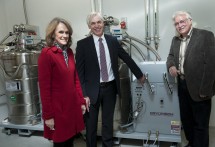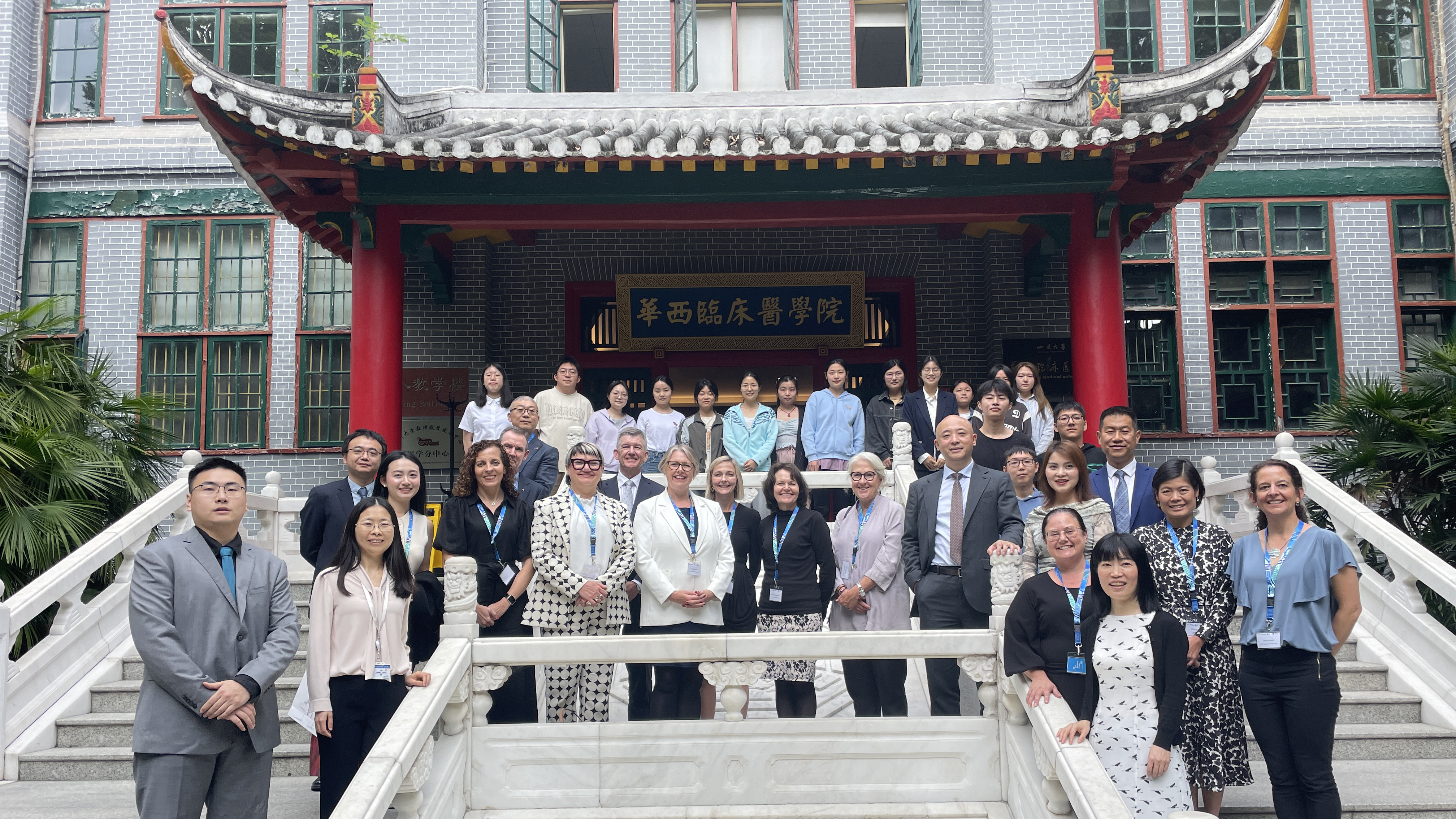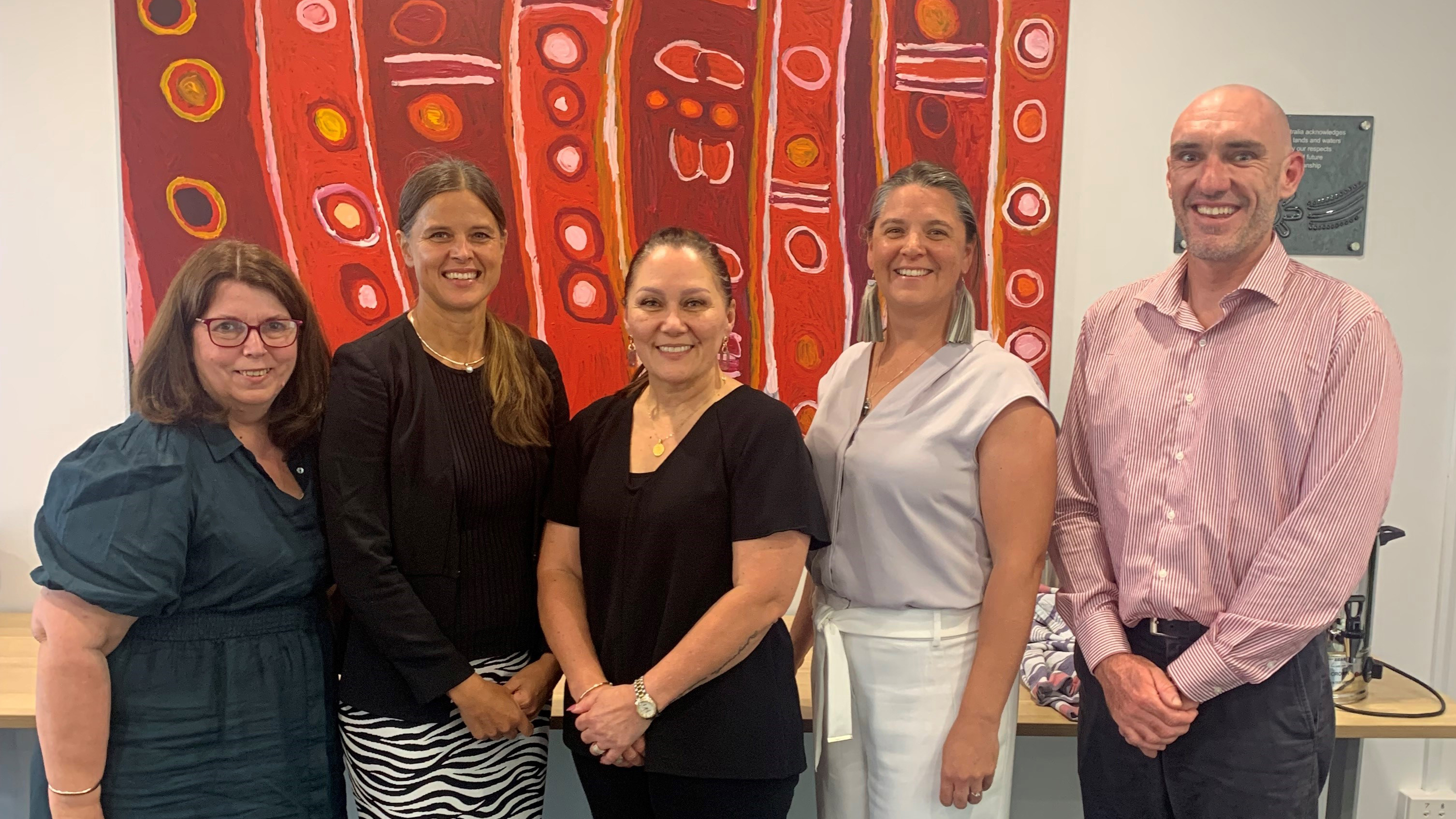
Macquarie University ‘flicked the switch’ on a state-of-the-art liquid helium recovery system yesterday, in partnership with the CSIRO and as an initiative of the ARC Centre of Excellence in Cognition and its Disorders (CCD).Helium, as a rare and non-renewable resource, poses a very significant investment risk for researchers worldwide, such as those in the CCD who work with helium-dependent Magnetoencephalography (MEG) systems. When global market shortages in helium occur, such as those earlier in 2013, research is threatened and potential new discoveries postponed. There are only about a dozen helium extraction plants in the world where it is economical to retrieve the helium gas (typically 0.3%) from the natural gas mixture which has been trapped below the ground. Lighter than air, once helium is lost to the atmosphere, it escapes the earth permanently.“Also, as access to liquid helium becomes more and more limited, the cost continues to rise,” says CCD Director, Distinguished Professor Stephen Crain. “The market price is now typically around $30/liquid litre, and continues to rise as the availability of liquid helium continues to decrease.”
To alleviate this risk, the CCD have entered into a collaborative project with CSIRO to develop one of Australia’s first onsite heliu
m recovery and reliquefication systems.
“Unlike other recycling processes, where the helium gas that boils off during MEG operation needs to be taken for offsite processing, this onsite system offers one of the highest recycling rates (greater than 90% recycled,) with significant sustainability outcomes,” says CSIRO Chief of Materials Science and Engineering,Dr. Cathy Foley, “providing an independent and secure supply for the CCD”.
The system is designed to capture all the boil-off helium gas, pressurize, store and reliquefy it back into liquid for cryogenic cooling of the superconducting sensors. Contamination is kept to a minimum by providing an all-metal, leak-tight recovery system.
The MEG systems used in the CCD’s research programs are completely safe and non-invasive, so they are an ideal means for studying children’s brain development. However, MEG systems are expensive to operate, because the SQUID sensors that record the tiny signals generated by the human brain must be cooled to an extremely low temperature using liquid helium (LHe).
“With the current adult and child MEG systems, the CCD uses 200 litres of liquid helium per week,” says Crain, “and the boil-off helium gas is subsequ
ently lost to the atmosphere, so new liquid helium must then be purchased.”
The CCD, based in the Australian Hearing Hub, currently houses two purpose-built MEG systems, including the world’s first MEG system designed for use with pre-school children, and an adult system, the first of its kind in the Southern Hemisphere. A third MEG system will be installed in early August 2013, and this will be another world first system, specially designed for use with children and adults who have cochlear implants.
Overall, the Liquid Helium Recovery System will be of benefit to cognitive science researchers, making cutting edge MEG technology less expensive and more accessible for academics, students, and end-users in the broader community. These systems will yield insights into typical and disordered brain processing and, at the same time, pr
omote the efficient and sustainable use of our natural resources by recovering the helium that is expended during use of the MEG systems.
This collaborative project was partly funded by a New South Wales Science Leveraging Fund (NSW SLF) grant, and partly by the Macquarie University contribution to the CCD.








